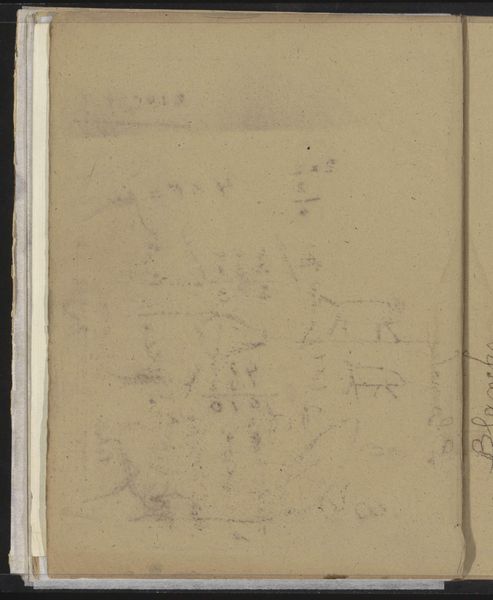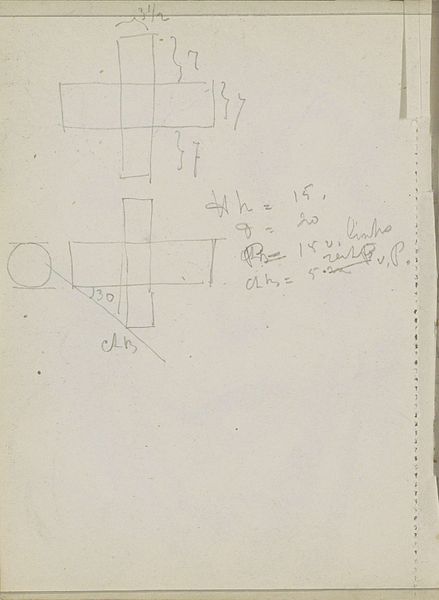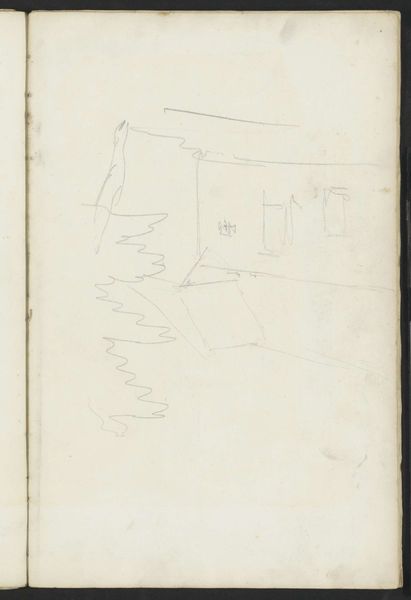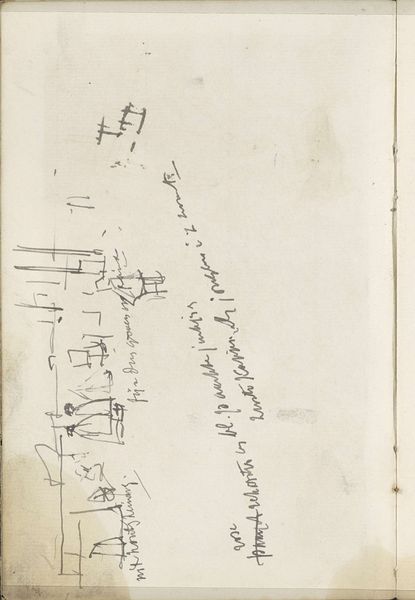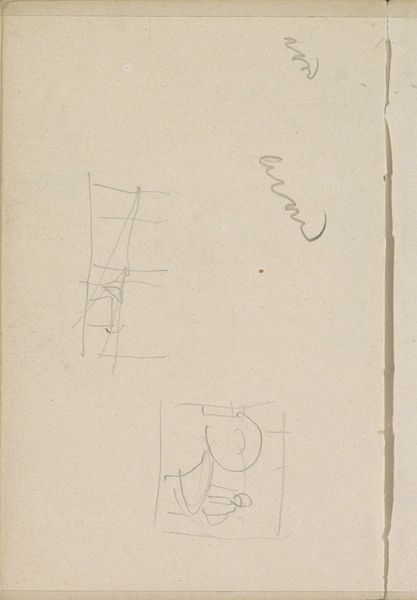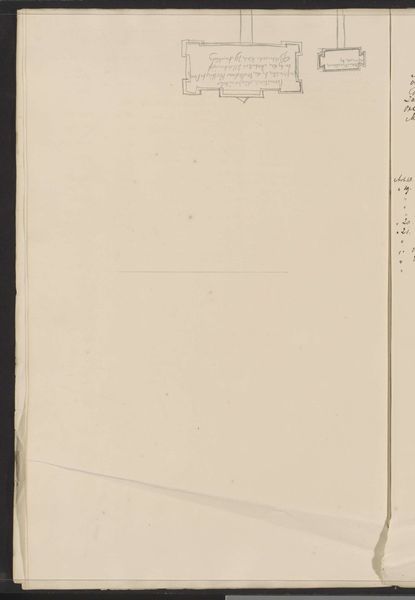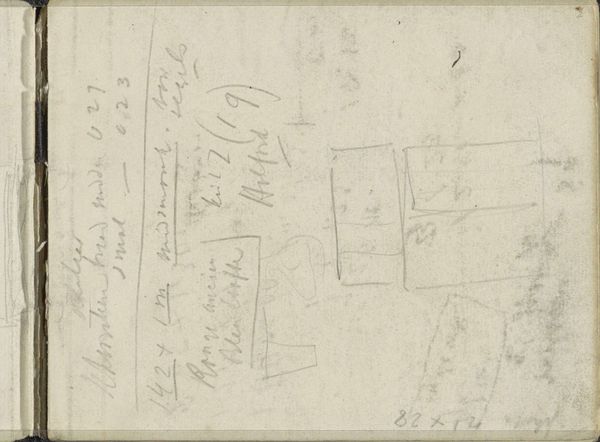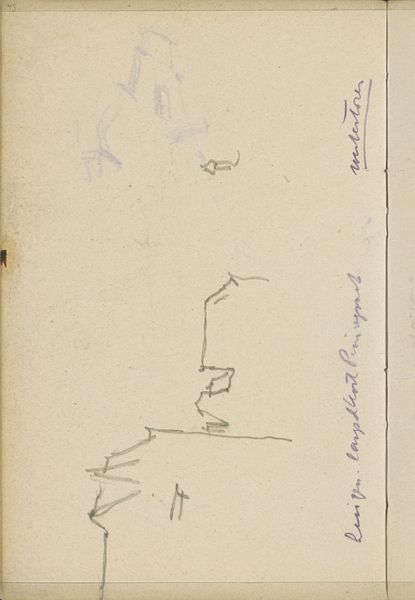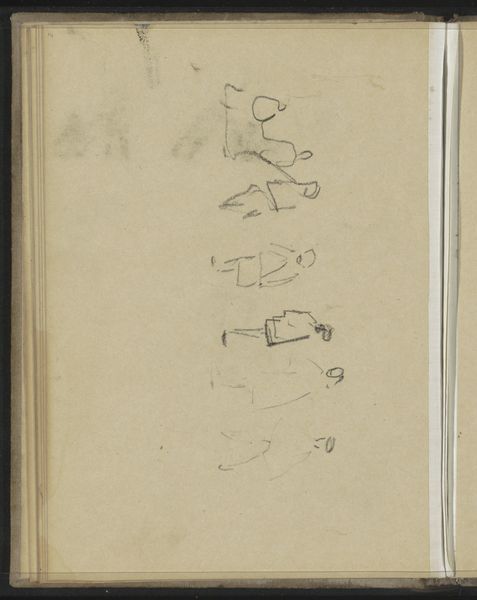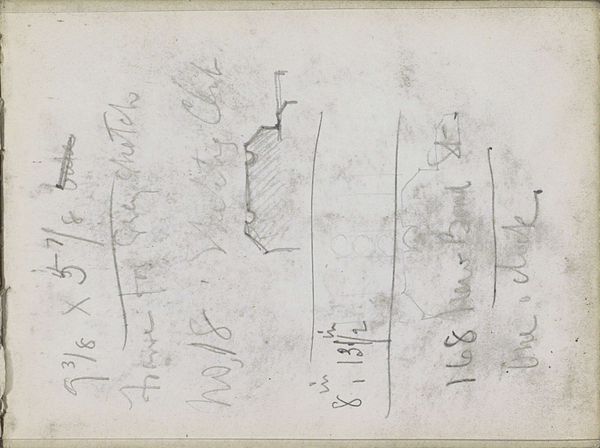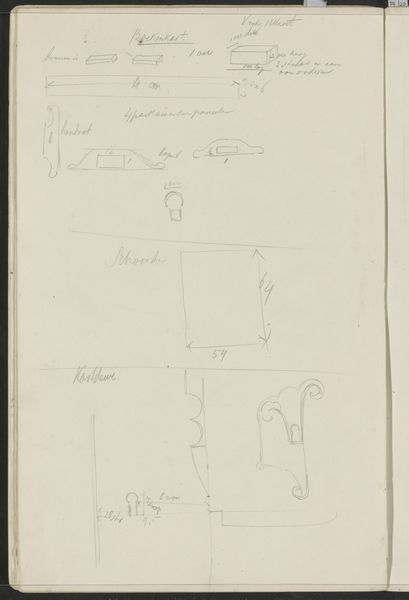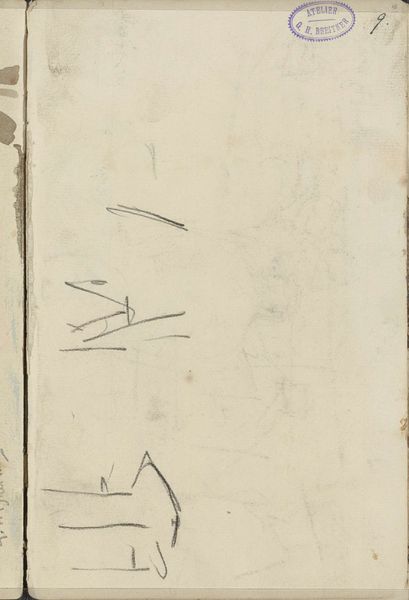
drawing, paper, pencil
#
drawing
#
paper
#
form
#
geometric
#
pencil
#
line
#
modernism
Copyright: Rijks Museum: Open Domain
Editor: So, here we have Carel Adolph Lion Cachet's "Plattegronden" from around 1903-1904, a pencil drawing on paper currently at the Rijksmuseum. I'm struck by the almost mathematical nature of it; it's quite raw and stripped down. What catches your eye about this piece? Curator: Immediately, I observe the artist’s concern with spatial relationships and form. Note how Cachet uses line to delineate areas, creating a tension between geometric precision and the softness of the pencil. What visual rhythms do you perceive within this arrangement of forms? Editor: I see a pattern of rectangles and squares, and that single circular motif on the bottom left, providing a subtle contrast. It’s interesting how the artist focuses solely on the structural elements, rather than representational accuracy. How does that inform its meaning, then? Curator: Precisely. Meaning is derived from the internal relationships of these elements. The work invites contemplation of abstract structure; lines become boundaries, and shapes suggest potential spaces. Notice the varying weights and qualities of line. How do they contribute to the work’s overall compositional structure and rhythm? Editor: It feels intentional; some lines are bolder, framing areas, while others are fainter, almost like ghost lines of alternate designs. So the aesthetic value lies in how these simple forms interact, rather than what they represent. Curator: Yes, the work becomes a self-referential system. Think of semiotics; the drawing, through the relationships of its constituent parts, speaks about drawing itself. Do you think that Cachet intended us to interpret beyond the intrinsic qualities of line and form? Editor: Possibly. But after our chat, I feel like it stands strong as an exercise in pure, structural visualization. I've certainly developed an eye for composition! Curator: Indeed. And by engaging with this exercise, we are granted entry to understand not only what can be visually appreciated, but to create a dialogue through form itself.
Comments
No comments
Be the first to comment and join the conversation on the ultimate creative platform.
